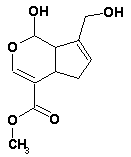Jagua tattoos are a beautiful and unique way to adorn your body, and what better place to get one than at a festival? Whether you’re attending a music festival, cultural celebration, or art fair, getting a jagua tattoo can be a fun and meaningful experience.
Jagua is a natural dye that comes from the fruit of the jagua tree, which grows in the rainforests of South America. When applied to the skin, jagua creates a dark blue-black stain that lasts for up to two weeks. Just like henna, jagua is a plant-based dye, used historically for body art, and so it is considered safe for use on the skin.
At a festival, you’ll likely find a booth or tent where you can get a jagua tattoo. The artist will begin by cleaning and preparing the area of skin where you want the tattoo. They’ll then use a small needle or brush to apply the jagua paste to your skin. The paste will dry within a few minutes, and you’ll be able to go about your day without worrying about smudging or smearing the tattoo.
As the jagua paste dries, you may feel a slight tingling or itching sensation on your skin. This is normal and should subside within a few hours. Once the paste is fully dry, you can wash it off with soap and water, revealing the beautiful blue-black stain underneath.
One of the great things about jagua tattoos is that they can be customized to your liking. You can choose from a variety of designs, or you can work with the artist to create a unique design that’s tailored to your preferences. Whether you want a small, simple design or a large, intricate piece, the artist can help bring your vision to life.
Getting a jagua tattoo at a festival can be a great way to commemorate your experience. It’s also a way to connect with the local culture and traditions of the festival. Many festivals offer jagua tattoos as a way to support local artists and artisans, so getting a tattoo can also be a way to contribute to the local economy.
In conclusion, getting a jagua tattoo at a festival can be a fun and memorable experience. Whether you’re attending a music festival, cultural celebration, or art fair, take some time to explore the jagua tattoo booths and see what designs catch your eye. Who knows? You may end up with a beautiful and meaningful piece of body art that will remind you of your festival experience for years to come.



